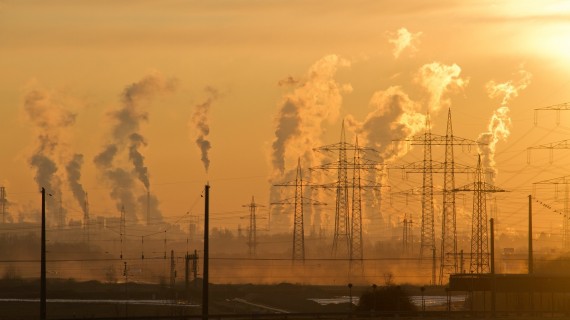If you’re someone who loves to travel and explore new destinations, but you’re also eco-conscious, you may have a hard time deciding the right paths to take. There’s something to be said for staying in the U.S. when you travel, for example. You’re reducing your carbon footprint, and you’re also having less of a potentially harmful impact on other environments and communities. That can then lead to the question of whether cars or planes contribute more to pollution. Below, we discuss some of the things you might consider as you make eco-conscious travel plans for your next leisure trip.

The Impact of Flying on the Environment

Many people are growing increasingly conscious of their impact on the environment around them. As a result, there’s more focus on air travel, even leading to the coining of the phrase “flight shaming“.
Flying does increase your personal carbon footprint, for this, it would be important to travel by plane as little as possible.
Air travel only makes up around 2.5% of global carbon emissions. In the U.S., flying accounts for an estimated 9% of transportation emissions but just 3% of total carbon emissions.
There are certain things you can do to reduce the environmental and carbon footprint of flying.
One is to avoid short-haul flights. Flying nonstop is better than connecting flights because the further you’re going, the more efficient flying is.
You can also do calculations to determine when it’s better to fly and when it’s not compared to other forms of transportation. There are carbon calculators that will help you determine the mode of transportation with the lowest carbon footprint for a trip.
If you find that flying might be a particularly bad option, consider alternatives such as a train.
People who travel by plane a lot also often take steps to reduce their impact in other parts of their life, like driving a hybrid or electric car, buying secondhand, and driving less. You can also change your home heating system to renewable energy, and buy local rather than online.
What About Airline Carbon Offsets?

Some people opt to buy carbon offsets for their airplane travel. If you’re a frequent flyer, it does account likely for the majority of your personal carbon emissions. Airplanes emit particles and gasses like C02 into the atmosphere. C02 is one of the greenhouse gasses occurring in the atmosphere, and when they’re working as they should, they regulate the temperature of the earth.
The EPA uses a Carbon Footprint Calculator to estimate the footprint of your household. It doesn’t, however, include flying, but there are other things you can use to estimate your flying footprint, as mentioned above.
Carbon offsetting is when you pay money to make up for the addition of carbon into the atmosphere that you’re responsible for. The idea is that you’re spending money to offset your emissions through supporting projects that reduce carbon emissions in other ways or produce clean energy.
On the one hand, offsetting helps us to be aware of our ecological footprint and to assign a price to pay for our unsustainable actions.
On the other hand, offsetting reduces our commitment to undertake more sustainable trips. This risks generating more emissions.
Furthermore, the offsetting mechanisms are very uncertain. Measuring CO2 emissions and the necessary offsets is not that simple. Approximations are used, and it is not certain you will get full offsetting of your emissions.
Finally, most clearing systems are not without uncertainties. Who checks that the tree planted to offset your flight remains alive for the time it takes to do so? Many offsetting systems, including REDD +, have been criticized for failing to ensure effective offsetting of the emissions they were paid for.
What About the Impact of Driving?

In general, the transportation sector is one of the largest sources of CO2 emissions and along with planes, that includes cars. The transportation sector does burn most of the petroleum in the world and is a major air pollution contributor. Around 80-90% of the environmental impact of cars is from fuel consumption and air pollution emissions.
How Do Flying and Driving Compare?

Both modes of transportation contribute to greenhouse gasses and impact the climate.
The answer as to which one is worse can depend, and it gets somewhat complicated.
When you’re deciding on whether to drive or fly, you have to factor in a number of factors. Some of these factors include:
- The distance traveled
- How far you would need to drive to get to the airport
- How many people are going to be in the plane or car traveling to the same destination
- The fuel efficiency of the vehicle
A typical passenger vehicle, according to the EPA, will emit around 4.6 metric tons of carbon dioxide a year.
By comparison, a cross-country, round-trip flight from New York to Los Angeles produces an estimated 0.62 tons of CO2 per passenger, according to the UN’s International Civil Aviation Organization.
If you were to drive the same route, it would lead to carbon emissions equaling around 1.26 tons.
It can seem like, based on these numbers, that flying is better than driving, but when you have multiple people in the car at the same time, you’re reducing the emissions per person, and you make driving more environmentally friendly. If you’d be driving a long distance solo, flying is probably better.
The train always remains the most sustainable means of transport and to be preferred in any case to the plane and the car.
You can also take steps during your trip that will help reduce the emissions in other ways. For example, pack as light as you can, which will make both types of trips more efficient.




